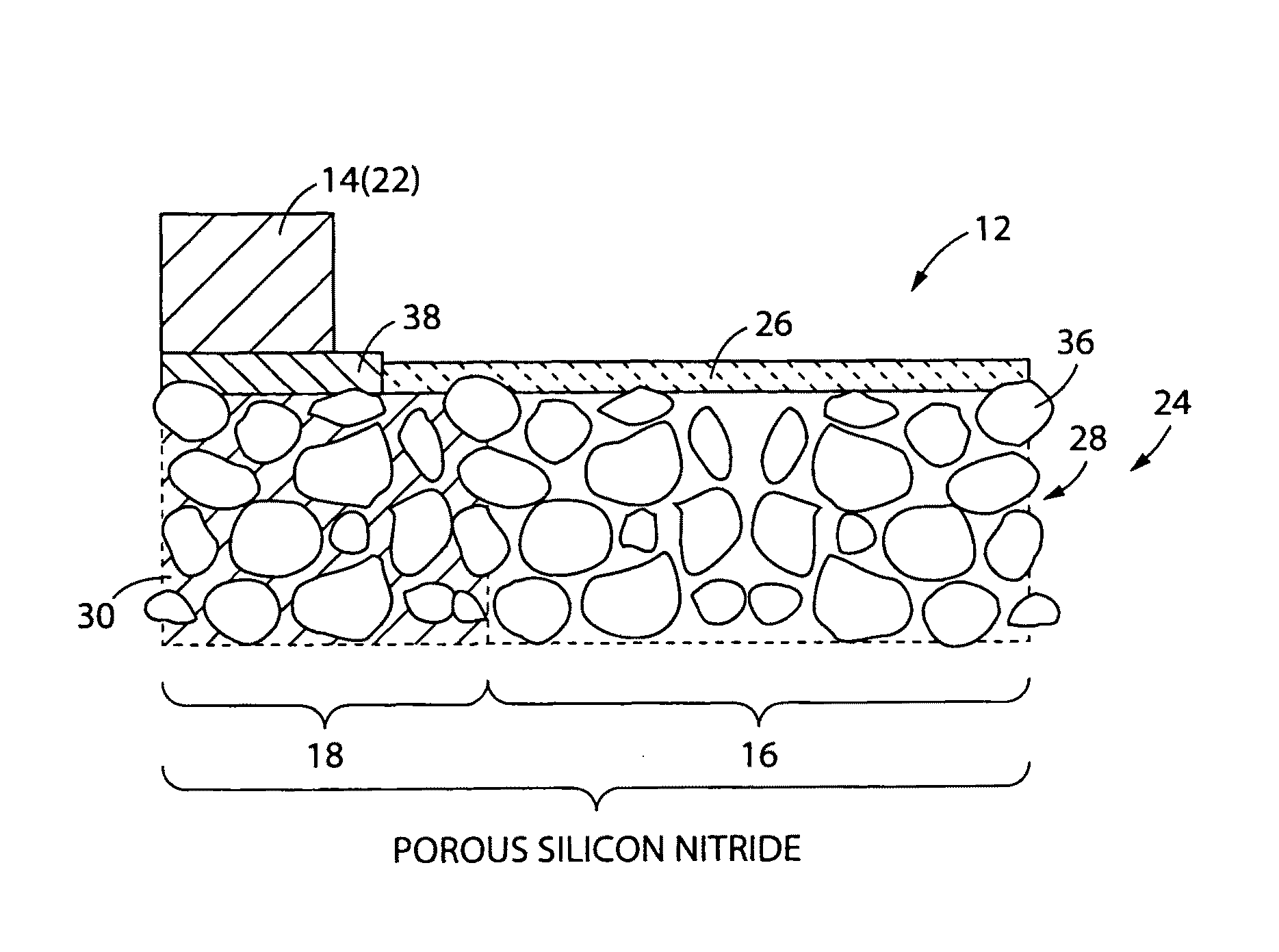Composite ceramic body, method of manufacturing the same and ceramic filter assembly
a technology of ceramic filter and composite ceramic, which is applied in the direction of hydrogen/synthetic gas production, inorganic chemistry, machines/engines, etc., can solve the problems of restricting the increase of porosity, and achieve the effect of restrainting crosslinking and polymerization reactions
- Summary
- Abstract
- Description
- Claims
- Application Information
AI Technical Summary
Benefits of technology
Problems solved by technology
Method used
Image
Examples
Embodiment Construction
[0058]Hereinafter, there will be described the present invention by reference to the drawings. The figures are appropriately simplified or transformed, and all the proportion of the dimension and the shape of a portion or member may not be reflective of the real one in the following embodiments.
[0059]FIG. 1 illustrates a ceramic filter assembly 10 in whole of an embodiment according to the present invention in a perspective view. The assembly 10 has a tubular shape in whole having a bottom, and includes a filter 12 having an opening on the left side and a bottom to be closed on the right side in FIG. 1, and a tubular connector 14 connected to the left side and on the opening of the filter 12.
[0060]The whole filter 12 is constituted by ceramic, and includes a porous material portion 16 on the bottom side, and a dense material portion 18 on the connector 14 side of the filter 12. The area filled with oblique lines in FIG. 1 indicates the dense material portion 18. The connector 14 is ...
PUM
| Property | Measurement | Unit |
|---|---|---|
| temperature | aaaaa | aaaaa |
| viscosity | aaaaa | aaaaa |
| porosity | aaaaa | aaaaa |
Abstract
Description
Claims
Application Information
 Login to View More
Login to View More - R&D
- Intellectual Property
- Life Sciences
- Materials
- Tech Scout
- Unparalleled Data Quality
- Higher Quality Content
- 60% Fewer Hallucinations
Browse by: Latest US Patents, China's latest patents, Technical Efficacy Thesaurus, Application Domain, Technology Topic, Popular Technical Reports.
© 2025 PatSnap. All rights reserved.Legal|Privacy policy|Modern Slavery Act Transparency Statement|Sitemap|About US| Contact US: help@patsnap.com



